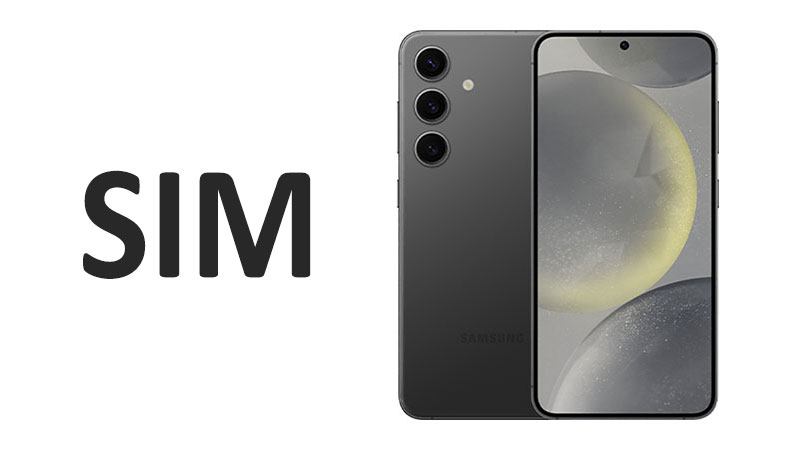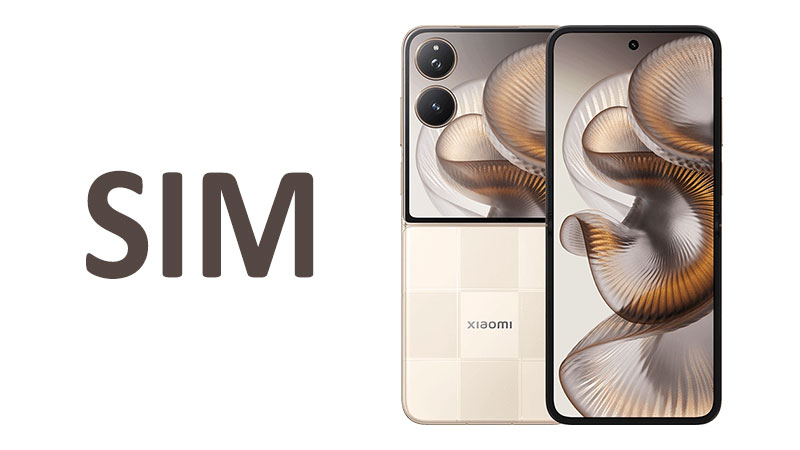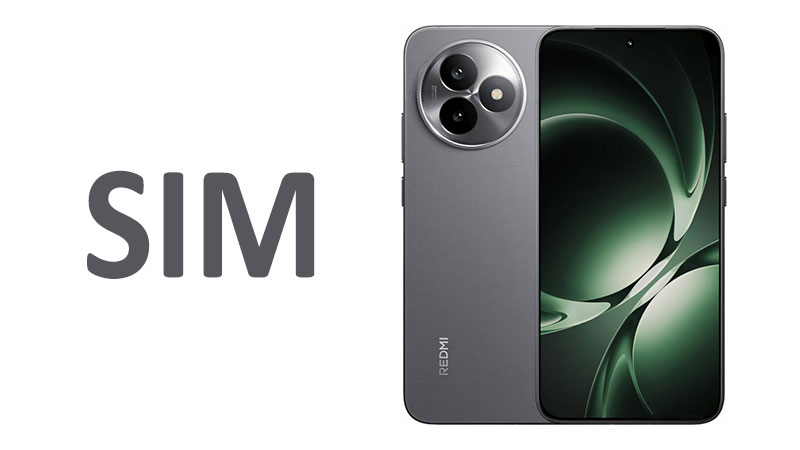The Samsung Galaxy S24 SIM setup is a masterclass in modern connectivity versatility. This flagship device offers a complex yet flexible Dual-SIM system. It combines physical Nano-SIMs with advanced eSIM technology. Understanding these connectivity options is vital for buyers. The device’s entire suite of wireless and wired connections is equally impressive. It is engineered for peak performance in every digital environment. This comprehensive article delves into every technical detail. It explores the regional differences in the SIM trays. Furthermore, it analyzes the phone’s 5G, Wi-Fi 6e, and high-speed USB features. This information helps users make the best informed purchasing decision.
The Complex World of Samsung Galaxy S24 SIM Configuration
The Samsung Galaxy S24 SIM functionality varies significantly by geographic region. This ensures the phone meets specific market demands and carrier mandates. The core feature remains the Dual-SIM capability. However, the methods used to achieve this capability differ. Users must identify their local model specifications accurately. This prevents any purchasing confusion regarding physical and electronic SIMs.
Regional SIM Flexibility: International, USA, and China Models
Samsung divides the SIM configuration into three primary models. The International model offers the greatest technical flexibility. It supports Nano-SIM + Nano-SIM + eSIM + eSIM. However, the phone can only utilize a maximum of two lines simultaneously. This means users can choose between dual physical SIMs or one physical SIM plus one eSIM. They could also use two eSIMs at the same time. This wide choice caters to global travelers.
The USA model streamlines this configuration. It typically focuses on one physical Nano-SIM slot. It combines this with multiple programmable eSIMs. The specification lists Nano-SIM + eSIM + eSIM. Again, the active line maximum is two. This reflects the strong carrier reliance on eSIM technology in the United States. Many US carriers actively push the eSIM standard.
The China model maintains a traditional approach. It supports only Nano-SIM + Nano-SIM. This version does not include eSIM functionality. This is common in the Chinese market. It prefers dedicated physical dual-SIM trays. Therefore, buyers in China rely exclusively on physical cards for their two active lines.
Specialized Comparison: The Power of Multiple eSIMs
The Samsung Galaxy S24’s inclusion of multiple eSIM profiles is a major advantage. Competitors often limit users to one physical SIM and one eSIM. The S24, particularly the International and USA variants, allows multiple eSIM profiles to be stored. Although only two can be active, the user can switch between stored profiles quickly. This is essential for frequent international travelers. They can activate local eSIMs easily. They can then switch back to their home line upon returning. This is a far simpler process than swapping physical plastic SIM cards. Older Samsung models often supported fewer stored eSIM profiles. The S24 significantly enhances this digital convenience.
Pros and Cons of the Galaxy S24 SIM System
The greatest advantage is the sheer flexibility provided. The phone supports physical, digital, and hybrid configurations. Users can easily manage separate work and personal lines. They can also optimize roaming charges while traveling. The multiple stored eSIM profiles offer a seamless digital experience. This eliminates the need to carry small SIM ejector tools and fragile cards.
A potential drawback is the complexity of the regional variations. A user who purchases a USA model might expect two physical slots. They will be disappointed. Furthermore, managing the switching process between numerous stored eSIMs requires careful user attention. Only two lines can be active at any time. This limitation is necessary for system resource management.
Important Points for Samsung Galaxy S24 SIM Buyers
Buyers must first confirm the exact model number and region. This determines the available physical SIM slots. If frequent international travel is the main goal, the International model offers the best hybrid flexibility. Users should also ensure their local carrier supports eSIM provisioning. While widely adopted, not every carrier fully supports the technology yet. Understanding the maximum two active lines rule is also critical. Both lines can receive calls and texts simultaneously. However, only one line typically handles the active mobile data connection at a time. This is a standard industry practice.
High-Performance Mobile Networking: 5G and Global Compatibility
The Samsung Galaxy S24 features a comprehensive mobile network capability. It supports GSM, CDMA, HSPA, EVDO, LTE, and 5G technologies. This extensive list ensures compatibility across every major global network standard. This versatility is necessary for a global flagship smartphone.
The Essential 5G and LTE Foundation
The primary performance driver is 5G connectivity. 5G provides significantly faster data speeds than previous generations. It also dramatically reduces network latency. This low latency is essential for cloud gaming and real-time remote collaboration. The S24 supports both sub-6 GHz and mmWave 5G bands. Sub-6 GHz provides broad coverage and better building penetration. mmWave offers ultra-fast, multi-gigabit speeds over shorter distances in dense areas. This dual-band support guarantees the fastest possible speed wherever available.
LTE (4G) remains vital for continuous coverage. The phone seamlessly hands off between 5G and LTE networks. This ensures continuous service even when the 5G signal weakens. The S24’s modem supports advanced LTE features. These include carrier aggregation. This technique combines multiple network channels for faster 4G speeds.
Specialized Comparison: CDMA and EVDO Support
The inclusion of CDMA and EVDO is a key factor in the US market. CDMA is a legacy technology used by specific US carriers. EVDO is the older data protocol for CDMA networks. Many modern global flagships exclude CDMA support entirely. Samsung’s inclusion ensures universal compatibility across all major US networks. This is a crucial detail for buyers relying on these older network infrastructures. This contrasts with many international phones. These often focus exclusively on the GSM/LTE/5G standards. Samsung ensures its flagship works for all US users.
Pros and Cons of Network Technology
The main benefit is universal compatibility. The phone works across nearly every mobile network worldwide. The advanced 5G modem ensures fast and reliable data transmission. This future-proofs the device for the next several years. The seamless switching between network types provides uninterrupted service.
There are no significant cons to this comprehensive network support. The extensive band coverage ensures that connectivity is maximized. Users simply need to ensure their region supports the desired network technology. The device handles all necessary protocol conversions internally.
Next-Generation Wireless Access: Wi-Fi 6e and Tri-Band
The Samsung Galaxy S24 features a highly capable WLAN suite. It includes Wi-Fi 802.11 a/b/g/n/ac/6e standards. It supports tri-band operation and Wi-Fi Direct. The inclusion of Wi-Fi 6e is a significant performance boost. It sets the phone apart from older Wi-Fi 6 devices.
Deconstructing the Wi-Fi 6e Standard
Wi-Fi 6e is an extension of the Wi-Fi 6 standard. The ‘e’ stands for extended. This extension refers to the use of the 6 GHz frequency band. This is a newly available band for Wi-Fi traffic. It is significantly cleaner and less congested than the legacy 2.4 GHz and 5 GHz bands. This new band provides wider channels and reduced interference. This translates directly to ultra-low latency. It also provides multi-gigabit speeds in ideal conditions. Wi-Fi 6e is crucial for demanding activities. These include high-resolution wireless screen mirroring and competitive gaming.
The Tri-Band and Wi-Fi Direct Advantage
Tri-band operation means the phone uses all three frequency bands: 2.4 GHz, 5 GHz, and 6 GHz. The 2.4 GHz band provides the longest range and best penetration through walls. The 5 GHz band offers fast speed over a shorter distance. The 6 GHz band provides maximum speed and stability. The phone intelligently selects the optimal band based on signal strength and congestion. This automatic selection ensures the best possible wireless performance at all times.
Wi-Fi Direct allows the S24 to connect directly to other compatible devices. It bypasses the need for a router or access point. This is useful for fast local file transfers. It is also used for printing and screen sharing. This peer-to-peer capability adds significant local utility.
Specialized Comparison: Wi-Fi 6e vs. Older Wi-Fi 6
The jump from standard Wi-Fi 6 to Wi-Fi 6e is substantial. Standard Wi-Fi 6 does not access the 6 GHz band. It is limited to the increasingly congested 2.4 GHz and 5 GHz bands. Wi-Fi 6e unlocks the wide-open 6 GHz spectrum. This provides a dedicated, high-speed lane for data. This is the key difference for users in crowded areas. This ensures high throughput, even with many devices nearby. This gives the S24 a clear advantage over phones only supporting basic Wi-Fi 6.
Pros and Cons of WLAN Implementation
The primary advantage is the access to the clean 6 GHz band. This minimizes latency and maximizes local network speed. The tri-band support ensures connectivity across all legacy networks. This also ensures the longest possible range via the 2.4 GHz band. The entire system is highly optimized for fast, continuous data flow.
The only constraint is external. Users must own a Wi-Fi 6e compatible router to utilize the 6 GHz band. The phone is fully capable. However, it will only perform at Wi-Fi 6 speeds on older routers. This is an infrastructure requirement. It is not a limitation of the S24 hardware.
Short-Range Connectivity: Bluetooth 5.3 and Audio Performance
The Samsung Galaxy S24 uses the advanced Bluetooth 5.3 standard. This is the latest widely adopted version for short-range wireless communication. Bluetooth 5.3 manages all connections to accessories. These include wireless earbuds, smartwatches, and car systems.
Deep Dive into Bluetooth 5.3 Features
Bluetooth 5.3 brought several key improvements over previous versions. It offers enhanced power efficiency for connected devices. This is achieved through improved communication protocols. This means longer battery life for both the phone and accessories. It also includes better security features.
The standard supports A2DP (Advanced Audio Distribution Profile). A2DP ensures high-quality stereo audio streaming to compatible devices. Crucially, it supports LE (Low Energy) Audio readiness. LE Audio is the next generation of Bluetooth audio. It offers improved sound quality and greater efficiency. The S24 is ready to adopt new LE Audio features as accessories become available.
Specialized Comparison: Bluetooth 5.3 vs. Bluetooth 5.4
Bluetooth 5.3 is a highly stable and efficient standard. Some newer phones may feature Bluetooth 5.4. Version 5.4 offers slight refinements to the LE profile. It also introduces Auracast broadcast audio readiness. The S24’s 5.3 implementation is still excellent. It provides all necessary speed and efficiency for current accessories. The difference in daily use between 5.3 and 5.4 is minor for most users. The 5.3 standard in the S24 is mature and highly optimized. It ensures reliable connections with all current market accessories.
Pros and Cons of Bluetooth 5.3
The primary advantage is the power efficiency and stability of Bluetooth 5.3. This ensures long battery life for connected wearables and earbuds. The A2DP support guarantees high-quality stereo sound. The LE Audio readiness positions the phone for future audio advancements.
A minor disadvantage is the lack of the newest Bluetooth 5.4 features. Specifically, it may not immediately support Auracast for large-scale audio sharing. However, the connectivity is robust and performs excellently for all private use cases. The system is universally compatible with every existing Bluetooth device.
Precision Positioning: Comprehensive GNSS Support
Accurate location services are mandatory for modern mapping and navigation. The Samsung Galaxy S24 features a robust Global Navigation Satellite System (GNSS) suite. It supports five major global and regional systems. These include GPS, GLONASS, BDS, GALILEO, and QZSS.
Understanding the Five Positioning Systems
The phone uses signals from all five systems simultaneously. This multi-system approach is known as concurrent GNSS.
- GPS is the original US system.
- GLONASS is the Russian system.
- BDS is China’s BeiDou system.
- GALILEO is the European Union’s system.
- QZSS is the Japanese regional augmentation system.
By using signals from many different satellites, the phone achieves exceptional accuracy. This high density of available signals reduces error margins. It provides faster location locks. It also ensures reliable navigation in challenging environments. These locations include deep urban centers or dense forests.
Specialized Comparison: Multi-GNSS vs. Basic GPS
Older phones often relied solely on GPS. Reliance on a single system leads to potential signal drops. It also increases location error. The S24’s use of five concurrent systems is a significant upgrade. This method ensures continuous, reliable, and highly accurate positioning. It is essential for demanding navigation apps and precise fitness tracking. This multi-GNSS approach confirms the phone’s flagship status.
Physical and Auxiliary Connections: USB, NFC, and Radio
The connectivity suite extends to crucial physical and auxiliary connections. The Samsung Galaxy S24 includes a high-speed USB port. It also features Near Field Communication capability.
High-Speed USB Type-C 3.2 with DisplayPort 1.2
The Samsung Galaxy S24 features a USB Type-C 3.2 port. This is a substantial step up from the slower USB 2.0 standard. USB 3.2 offers high-speed data transfer. It can move large files quickly between the phone and a computer.
Crucially, the port also supports DisplayPort 1.2. DisplayPort allows the phone to output high-resolution video and audio directly. Users can easily connect the phone to an external monitor or television. This enables a desktop-like environment. Samsung’s DeX feature utilizes this capability fully. The port also supports On-The-Go (OTG) functionality. OTG allows the S24 to connect and power external peripherals. These devices include keyboards, mice, and flash drives.
NFC for Seamless Transactions
Near Field Communication (NFC) is standard on the S24. NFC enables convenient, secure, contactless mobile payments. Users can easily store their payment methods in the phone’s digital wallet. They then tap the phone at any compatible terminal to pay. This capability streamlines daily transactions. It reduces the need to carry physical cards. NFC also simplifies pairing with compatible Bluetooth accessories.
A Note on the Absence of Radio
The specifications confirm the absence of an integrated FM radio tuner. This is now standard practice across the flagship smartphone industry. Most consumers prefer high-quality internet streaming services. These services include music, podcasts, and digital radio apps. The fast 5G and Wi-Fi 6e connectivity ensure seamless streaming. Therefore, the lack of an FM tuner does not affect the vast majority of modern users.
Overall Connectivity Pros, Cons, and Buyer Points
The Samsung Galaxy S24 offers a connectivity profile that is robust and highly reliable. It excels in both wireless speed and physical utility.
Key Connectivity Advantages
- Maximum SIM Flexibility: The inclusion of physical Nano-SIMs and multiple eSIM profiles caters to all user needs. This is especially true for international travelers.
- Universal 5G and CDMA Support: The comprehensive network band coverage ensures connectivity anywhere in the world. It works even on legacy US CDMA networks.
- Advanced Wi-Fi 6e: Access to the clean 6 GHz band minimizes latency. It also maximizes local network speed and stability in crowded locations.
- High-Speed USB 3.2: This port enables rapid data transfer. The added DisplayPort 1.2 functionality is crucial for DeX and external monitor support.
- Multi-GNSS Precision: Concurrent use of five satellite systems guarantees fast, accurate, and reliable global positioning.
Key Connectivity Trade-offs
- Regional SIM Differences: The specific SIM configuration depends on the region of sale. Buyers must verify their model’s physical SIM slots before purchase.
- Bluetooth 5.3 vs. 5.4: The S24 lacks the newest Auracast feature of Bluetooth 5.4. This is a minor point for most users.
- Wi-Fi 6e Requirement: The full speed benefit of Wi-Fi 6e requires a compatible router. This is an external factor.
Essential Points a Buyer Should Know
A key purchasing factor is the SIM configuration. Users outside of China should familiarize themselves with eSIM activation. The flexibility of using two lines at once is a major advantage. The inclusion of Wi-Fi 6e is a significant factor for future performance. Users should consider upgrading their home router to fully utilize this speed. Finally, the USB 3.2 with DisplayPort capability unlocks the full DeX desktop experience. This effectively turns the S24 into a portable workstation. This high-utility port is a critical professional feature.
Conclusion: Making an Informed Connectivity Choice
The Samsung Galaxy S24 SIM and connectivity features are designed for the modern global user. The phone offers unmatched flexibility in line management. This flexibility comes through the combined use of Nano-SIM and eSIM technology. The phone’s network speeds are excellent. It utilizes fast 5G and highly efficient Wi-Fi 6e. This guarantees a rapid and stable connection in almost any environment.
Furthermore, the physical connections add significant utility. The USB Type-C 3.2 port with DisplayPort enables high-speed data transfer. It also supports desktop-like productivity via DeX. Minor trade-offs, like the lack of a radio tuner, are insignificant given the phone’s overall capability. The Samsung Galaxy S24 is an outstanding choice for any user. It perfectly balances regional compatibility, future-proof speed, and necessary professional utility.
Frequently Asked Questions (FAQ)
1. Can I use two eSIMs and one Nano-SIM simultaneously on the Galaxy S24?
No, the Samsung Galaxy S24 can only support a maximum of two active lines at any given time. These can be two physical SIMs, one physical SIM and one eSIM, or two eSIMs.
2. Does the Samsung Galaxy S24 support the newest Wi-Fi 7 standard?
The S24 supports Wi-Fi 6e, which is currently a high-speed standard. It does not include the latest Wi-Fi 7 (802.11be) standard. However, Wi-Fi 6e offers excellent speed and low latency.
3. What is the benefit of the USB Type-C port supporting DisplayPort 1.2?
DisplayPort 1.2 support allows the phone to directly output high-resolution video to an external monitor. This is essential for Samsung’s DeX desktop mode. It enables the phone to function as a powerful portable computer.
4. Is the positioning system on the Galaxy S24 better than older Galaxy models?
Yes, the S24 uses five concurrent GNSS systems. These include GPS, GLONASS, BDS, GALILEO, and QZSS. This multi-system approach provides greater signal density and much more reliable, accurate positioning than single-system GPS.
5. Will my older US CDMA network SIM card work in the S24?
Yes, the Samsung Galaxy S24 includes full support for both CDMA and EVDO technology. This ensures universal compatibility with US carriers that still utilize these legacy networks.



